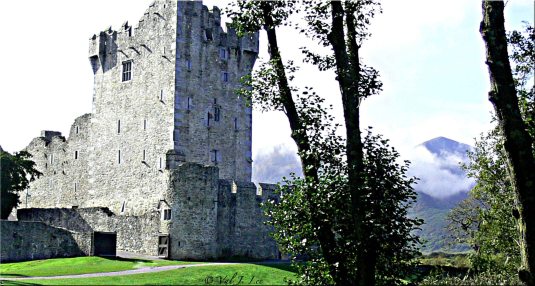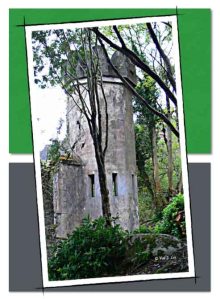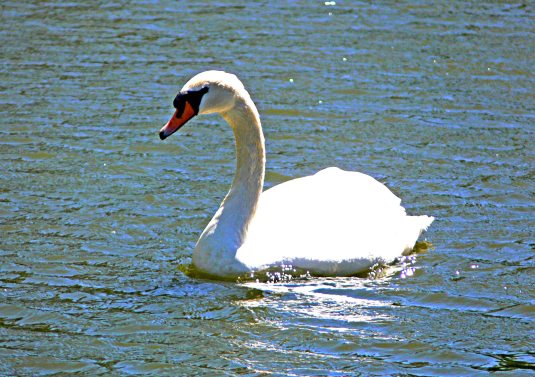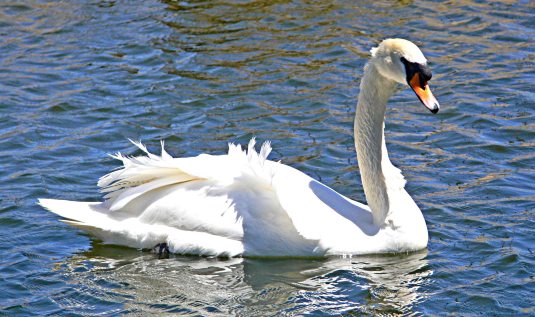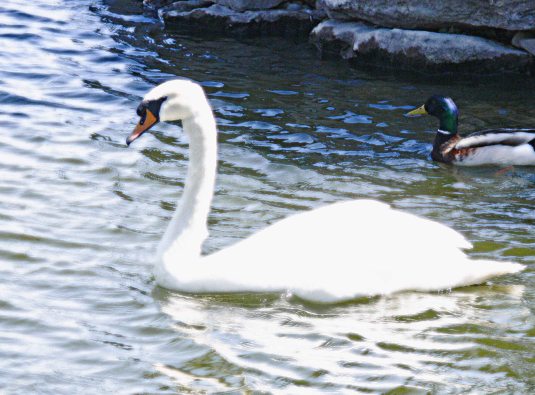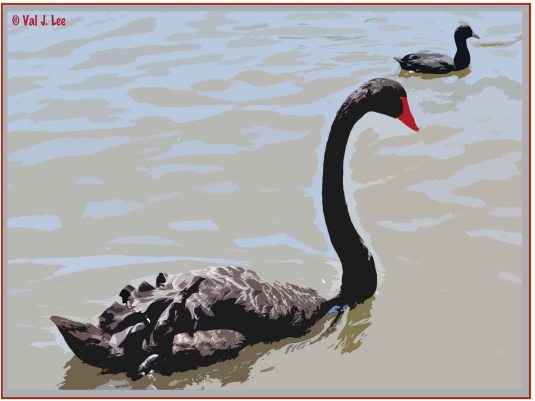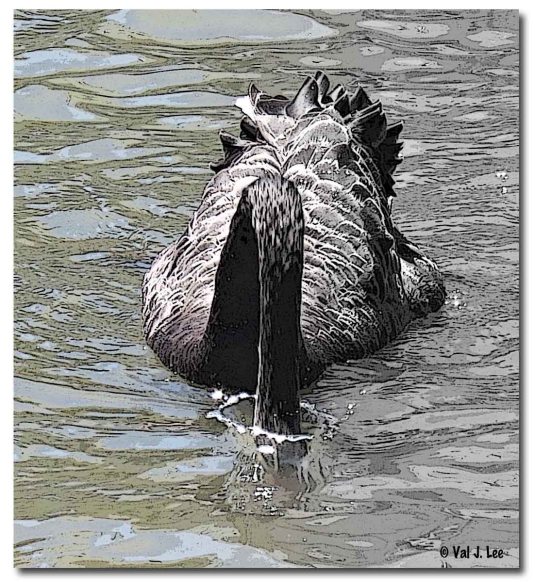My husband and I were consumed in Ireland’s radiant exquisiteness when vacationing. What astonishing sites we beheld! These emerald memories remain etched within.
I photographed the Mute Swan or White Swan (first photo) adjacent to this castle:
Gray citadels are visible in most every tidy town. And I must add, an award is presented to the tidiest of towns. Inhabitants were in dire need of a fleeing refuge, a place of defense in ages past. And, of course, kings desired ultra-impressive residences to live regally. Our family was in search everyday for these tall fortresses.
Christ Jesus is the fortress of believers. Born again Christians run to Him continually for comfort, love and support.
To learn of His personal love for you, please click here: https://birdsbyval.wordpress.com/2012/03/03/letter-to-bird-enthusiast/
The Mute Swan is Ireland’s largest bird though not mute. It’s repertoire is grunts and hisses, never singing lovely notes to you. Oh my, yes, this lovely bird does drop these menacing, out of tune tones. Certainly, by which point, it acquired its name. Despite this, this phenomenal waterfowl owns many positive attributes including poise and elegance. And no other aqua-bird can move as swiftly upon the water or in the air.
Mute Swans “are the largest waterfowl species of the subfamily Anserinae, family Anatidae—order of Anseriformes.” It is native to much of Europe and Asia, being introduced to North America. It does appear to be more appreciated and acknowledged in European countries. It is an ave of taste.
The Mute is regarded as an elegant bird, represented in Russian ballets and European children’s tales.
For centuries, Mute Swans were known as “Birds Royal” because only a king or a few favored subjects could obtain them. Traditionally, they were gifts moved between dignitaries—ownership being a mark of distinction. The Swan was often served roasted at banquets—quite the large entrée, weighing in at 27 pounds, being five feet in length, and 57 inches in height. This main dish was completely popular during the reign of Queen Elizabeth I and Queen Victoria, and here is a recipe surviving from Elizabeth’s reigning tenure: “To bake a Swan, scald it and take out the bones, and parboil (boil thoroughly), then season it very well with Pepper, Salt and Ginger, then lard it, and put it in a deep Coffin of Rye Paste with store of Butter, close it and bake it very well, and when it is baked, fill up the Vent-hole with melted Butter, and so keep it; serve it as you do the Beef-Pie.”
Besides Mutes being feasted upon at meals, the leathery web portion was applied for crafting purses and the wing bones for forming whistles. Old records have been preserved regarding their historical uses including quills for pens.
The next time you pick up a pen, consider this: Molted flight feathers (The wing feathers from fowl when shed, gaining new ones) from the female “pen” Mute Swan were used as writing implements—known as “pen quills” and later “quill pens.” The tips, sharpened with a pen knife, were continuously dipped into an inkwell (a small bottle holding ink) for letter and document writing. Eventually the “quill” was omitted and only “pen” remained for our present-day, pre-ink-filled writing instruments.
The LORD God has developed many of His species to be helpful to man in various, notable ways. This representing the grace of God placed upon us all.
Swans are no longer kept for fare for the royal palate, “But in England the Crown still has an official Swan Keeper and the ancient ceremony of swan-upping.” Swans on the Thames (The river running through central London) are rounded up for identification by the Crown, commencing on the Monday of the third week in July.
I read an article from 2013 written by an American hunter who bought a swan tag to hunt and did shoot a swan for a tasty meal. He knows fellow huntsmen who buy swan tags too and there are photos on the Internet of hunters who have shot swans. Link for purchasing tags to hunt swans in South Dakota: http://gfp.sd.gov/hunting/waterfowl/tundra-swan.aspx
“Swans after feeding in North Carolina grain fields for a month and slow roasted are the best eating of all waterfowl.” (Smith)
Hunting must be kept at a minimum, knowing swans have been hunted in former years to the place of near extinction. Formerly, thousands of robes were made with the feathers of swans and were shipped to Europe each year.
Though they have become a nuisance in some areas and people want the numbers controlled. And they are a loud bird, and when flying their wingbeats can be heard a mile away.
Though Swans are weighty, they are crafted to be powerful flyers, though take-off is a labored affair … They must prance across the surface of the waters to gain momentum while frantically beating their muscular wings— seven feet across when stretched out—to get airborne. Once in flight, they appear as the perfect maneuvering navigators. However, landing is a skiing event, crossing the surface to slow their substantial bulk. This is one of the LORD’S mighty big birds!
What qualifies the Mute as being the king of swans, is how it holds its neck curved gracefully and bill pointed somewhat downward, which makes our hearts strum in awe. This is what stands out to us birders, their graceful ways of maneuver, bending their dextrous necks, every whichaway in showy array.
Wings may be arched over the back, thus fanning the feathers in an upward swoop in gorgeous presentation. A Trumpeter Swan will only hold its head erect with no upsurge of the wings when gliding through the waters. Simply not as elegant as the Mute. However, the Black Swan of Australia will, at times, display wings in an upward swoop.
Swan necks are diving necks that stretch far, used to grab food on shallow pond bottoms. They maintain oxygen underwater by aquatic design. Because they cannot dive underwater with full body like ducks, God manufactured them with maneuvering long necks.
Mute Swan’s diet consists of vegetation—underwater plants and algae, also munching on bank grasses and grains in fields. They are also insectivores.
Although the cob (male) and pen (female) look strikingly similar at first glance, they can be distinguished by their beaks. In the spring and summer, the cob’s bill is brighter in hue and the black knob is more bulbous. Males are larger than the gals, as with geese.
God created these striking beautiful aves for lifetime mating—another positive note. (Love birds, Geese, eagles, doves, sparrows, owls, penguins and on and on, orchestrate lifetime commitments. Ninety-percent of bird species are reported to be monogamous. All these flyers are a witness to humans of the importance of sustaining the marriage covenant. If the wild can do it, why can’t civilized humans?)
The courtship of the cob and pen include “mutual bill dipping or head-to-head posturing.” It is a beautiful dance of royal commitment. They will intertwine, winding their necks together, in a most spectacular pose. Their wings expand upwards in copying beauty of wonder. They are the queens and kings of synchronized swimming. Jesus Christ is the one who creates life artistically.
The Mute couple might touch beaks and look at each other with affectionate eyes. Yes, to mate for life, they must maintain feelings for that special ave they become attracted to and it shows in their continual nearness to one another. They are committed to total devotion to each other for life and dedicated to their young in every nurturing aspect. The striking couple is equipped by the LORD God to erect that perfect home surrounded within their committed romance.
The cob and pen build a nest in March and April, on land near water, in an undisturbed, secluded location, perfect for honeymooning. If necessary, the cob will surround his gal to protect her from all harm. He is her brave knight in shining armor.
The cob will collect reeds and sticks, bringing them to the pen so she can arrange them to her whim. (Isn’t it amazing the female is the home decorator, all by God’s design?) The nest is often a large platform-like structure. A couple often enlist their previous nest (sometimes year after year) with some remodeling. The cob is never far from his nesting gal, keeping an eye out for intruders. If a potential predator gets too close, he will hiss and if necessary, charge with flapping wings. (A swan is capable of breaking a man’s arm or leg using its muscular, structured pinions.)
The pen lays 5-8 large, greenish-brown eggs, one every two days. She also performs the incubation nesting, which follows the completed egg-laying. This allows all the young to hatch together—36 days hence. The adoring parents dutifully feed their little ones with water plants and invertebrates. Cygnets will ride on the back of mommy in the water and even buried within her wings—a hidden treasure on the waters. The young reside with their parents until the following winter, by which time, they lose their brown plumage—replaced by gray down. It will be a full year or two before they are white as snow. The cygnets will fledge or fly within the range of 120 to 150 days. The parents must teach them how to fly before winter migration. Breeding will occur when they are three or four years old.
The cob loses his fight feathers or molts after the pen has re-grown hers. This way, a parent swan is always with the cygnets to protect them and can fly if necessary, all by God’s design. Waterfowl cannot fly during molting. Ducks and geese will usually lose their feathers after their parenting skills are no longer necessitated.
If a lifelong mate dies, a swan will often take another mate or will perish in its grief. One example: “On March 5, 2015 the Moscow Times reported that Gvidon, a Mute Swan, died of depression at the zoo a few months after his life partner, Tsarevna, was cruelly killed by a zoo visitor.”
Some swans fly short distances for migration. A swan can make a round-trip of almost 4,000 miles between their early spring breeding and wintering grounds.
Swan and duck swimming together in above photo; they being of the same kind in the eyes of God Almighty. Though the swan is mentioned as an unclean animal in some Bible versions, the true Hebrew actually is an unknown word and may apply to an extinct bird or possibly to the barn owl since owls are the main subject matter here. A swan is of the “kind” of duck and therefore was clean to eat in accordance with Jewish Old Testament law; Leviticus chapter 11. Anything within the duck species could become an entrée. Birds of prey were unclean and forbidden for consumption in the Old Testament according to God’s laws. In the New Testament any animal can be partaken as a food for Jews and Gentiles. All believers in Christ can bite into whatever eatable animal God placed on the earth. God declares, “Kill and eat.” In Acts chapter 10, God deems all foods clean. Anyone who states different, is adding to or subtracting from the Word of God, and therefore, a heretical teacher or false prophet, cursed of God.
Three other Bible verses for Christians: 1 Corinthians 8:8 – “But meat commends us not to God: for neither, if we eat, are we the better; neither, if we eat not, are we the worse.”
1 Timothy 4:4-5: “For every creature of God is good, and nothing to be refused, if it be received with thanksgiving: For it is sanctified by the Word of God and prayer.”
1 Corinthians 10:31 – “Whether therefore you eat, or drink, or whatever you do, do all to the glory of God.” (We must always offer thanksgiving for the LORD’S provisions.)
The Mute Swan lives 10 to 20 years in the wild, and up to 50 years in captivity.
🐦🐦🐦🐦🐦🐦
The Black Swan is recognized as the bird of Australia and is the close relative of the Mute Swan through design. I enjoyed seeing so many of them in “down under” Perth. When our tour director had our bus stop and mentioned the Black Swans nearby, I requested to leave the bus for a few moments to shoot photos. And she, being fair dinkum complied and let everyone off for a short duration. I am so grateful she did.
The Black Swan is the state emblem of Western Australia, maintaining its appearance on its flag. Black Swans are mainly found in southern Australia; breeding in the southeast and southwest regions. This species was hunted to extinction in New Zealand, but later reintroduced.
The Black Swan displays its lovely white wingtips for take-off, flight and courting, and can, at times, be noted when just swimming—lying centered, between their black wings. Blacks are gorgeous in flight with their black necks stretched straight-out and displaying their red beaks and white flight wings.
The Black Swans are aggressive, more so than the other seven swan species. Of course, this being most evident during mating and cygnet season. This species can be angrily aggressive and will actively seek out predators or intruders with its tamed senses.
They are noted for displaying the longest neck of all swan species, though they will not contort them as much as the Mute Swan. The ambidextrous necks of swans are absolutely remarkably fashioned by the Creator of all.
Black Swan feeding video:
The Black Swan cygnets are off-white in color, growing darker as they age. Breeding habits are akin to the Mute Swan.
Video on Trumpeter Swans, which is equipped with the same protecting characteristics as the Mute and Black:
https://www.youtube.com/watch?v=OnqkfglZI2Q
Baby Mute Swan rescued:
https://www.youtube.com/watch?v=dxd53ykmTvc
Much info gratefully gathered from various websites.
Val Lee

